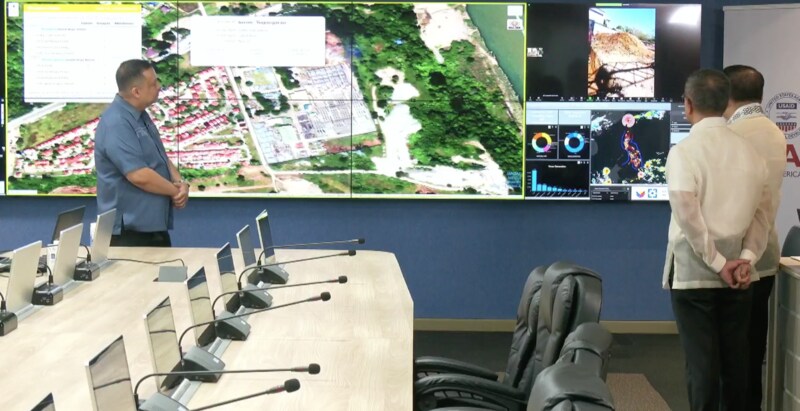In a move to improve the country’s resilience against disasters, the government will pilot test two innovations – Energy Sector Emergency Operations Center (ESEOC) and the Mobile Energy System (MES) – in the typhoon-prone municipalities of Sta. Ana and Lal-lo in Cagayan.
The ESEOC and MES will ensure power supply and the continuous operation of critical infrastructure during emergency and disaster situations.
Representing President Ferdinand Marcos Jr., Executive Secretary Lucas Bersamin yesterday led the launch of the ESEOC and turnover of the MES at the Energy Center in Bonifacio Global City, Taguig City.
The ESEOC and MES will eventually be distributed to other government agencies.
In a speech read by Bersamin, the President emphasized the importance of electricity during calamities and disasters
“These remarkable undertakings of innovation demonstrate how we capitalize on technological advancements and how we can provide proactive solutions to the energy challenges that beset our country. There is no doubt that these innovations will help in terms of guaranteeing power supply when it is needed most, especially during calamities, noting relief, response and reconstruction are not possible without available power,” he said.
The President thanked the United States Agency for International Development (USAID) for sharing its resources and expertise on the two projects, as well as to the Department of Energy (DOE) for bringing them to fruition to improve the resilience of the Philippine energy systems.
The two new initiatives are part of the USAID’s $34-million Energy Secure Philippines activity with the Philippine government.
During the event, USAID turned over eight solar-powered MES units to the DOE, which will be distributed to various government agencies and local government units (LGUs).
Each unit has 50kWh battery storage and when fully charged, it can power two television sets, two air-conditioning units, 10 light bulbs, two desktop computers, two laptops, five phone chargers, five electric fans, and one internet modem for almost 12 hours.
The ESEOC is a centralized energy command hub equipped with the latest technological innovation from Europe and US that will enable the DOE to spearhead coordinated disaster response process and system, offering clear guidance on prevention or mitigation of disruptions in the delivery of essential electricity services to affected areas
The MES is designed to improve energy access in remote communities and strengthen resilience during natural disasters and cyber threats to power utilities.





